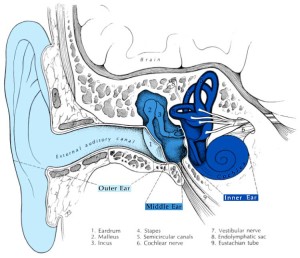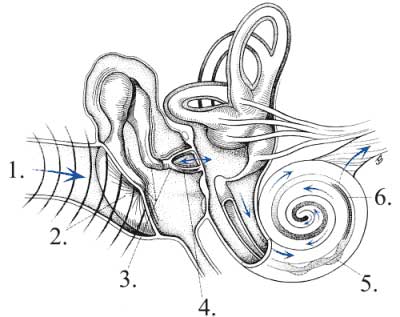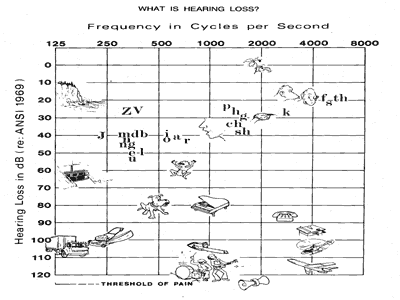How We Hear
The ear is the part of the body used for hearing and balance.
The ear is divided into three parts:
- Outer ear – the visible outer portion of the ear, plus the ear canal.
- Middle ear – the eardrum and three small bones (malleus, incus, and stapes (“stay-peas”)
- Inner ear – the fluid-filled, snail-shaped cochlea (“coke-lee-a”) which contains thousands of tiny hair cells. The cochlea is attached to the hearing (auditory) nerve.
When we hear, sound is first collected by the outer ear and sent down the ear canal to the eardrum.
(1) The sound vibrates the eardrum, which then vibrates the bones of the middle ear
(2-4) Motion of these bones results in movement of the fluid contained in the snail-shaped cochlea
(5) As the fluid begins to move, the tiny hair cells lining the cochlea move back and forth to generate an electrical current
(6) This electrical current stimulates the hearing nerve, which carries the signal to the brain and is interpreted as sound.





